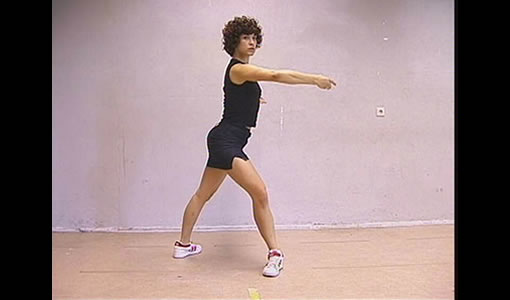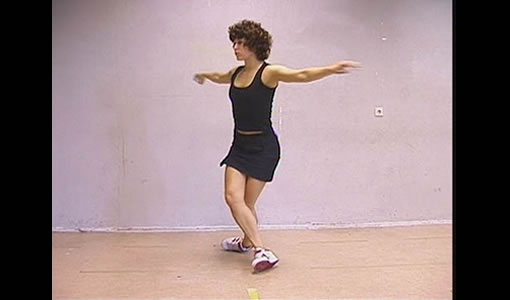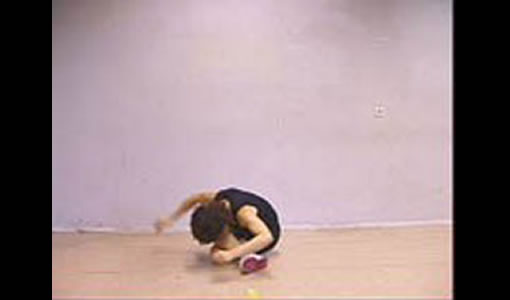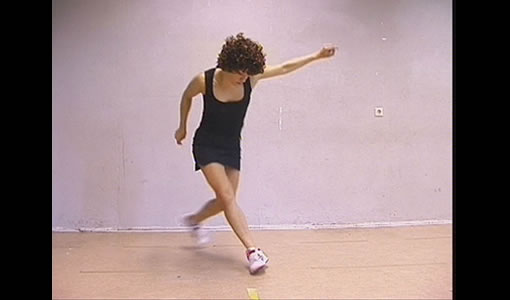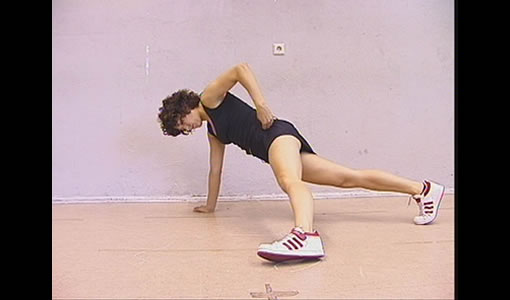“SHOWING”: EXHIBIT A, AS IN “ALEXANDRA BACHZETSIS”
“I show you mine if you show me yours”: here, in a nutshell, we find condensed the social contract that underlies the beginning of sexuality as an experience of Self and Other – and here we also find compressed the logic of the game of barter that is at the source of so much play in a more general sense. ‘Play’ certainly is an important part of Alexandra Bachzetsis’ conceptually inflected choreographic practice, and it is very often deployed (‘staged’) in a jarring, often humorous contrast with a static rigour that is more commonly associated with high-octane, minimalist conceptualism. Typologies – the quasi-scientific classification and cataloguing of body movements, for instance, of gestures or moves – are a characteristic device of this cerebral approach, and Bachzetsis’ performances regularly use a typological aesthetic to playfully critical effect. In “Showing”, the typology in question is that of seemingly machinic, starkly reduced dancing moves culled primarily from the pop glitz world of MTV – no wonder, then, that one of the main recurring choreographic themes or leitmotifs is that of the performer’s gyrating buttocks, mythic booty offered up for the audience’s visual pleasure. “Showing” is perhaps Bachzetsis’ most explicitly musical piece, an atlas or archive of body movements set entirely to a pop soundtrack that encompasses anything from Nelly to The Beatles. The setting itself reveals the artist’s minimalist agenda: a suprematist white square on a black floor is all we get – the only props that break the forbidding spell of this instance of formal disciplining a ghettoblaster and a scattered stack of blank cd’s. The actual performances consists of Bachzetsis, dressed in a black tank top, skin-colour ballet tights and boxing shoes, rummaging through the labelless cds, picking, inserting and playing one, getting up, going through the motions of a particular dance routine, sometimes until the song ends, sometimes not, and then mechanically returning to the stack. The robotic character of Bachzetsis’ ‘work’ (rabot means work in Russian) is further stressed by the fact that the same move is repeated while two entirely different music tracks blast out of the small speakers on the ground, such as The Beatles’ “Baby You Can Drive My Car” and Nelly’s “Hot in Here” (a much more plausible candidate for setting one’s pelvis into lurid motion). As in many of her other works, “Showing” makes a show of dialectics – the dialectic of difference and repetition being only one among many forms of bodily contradiction.
